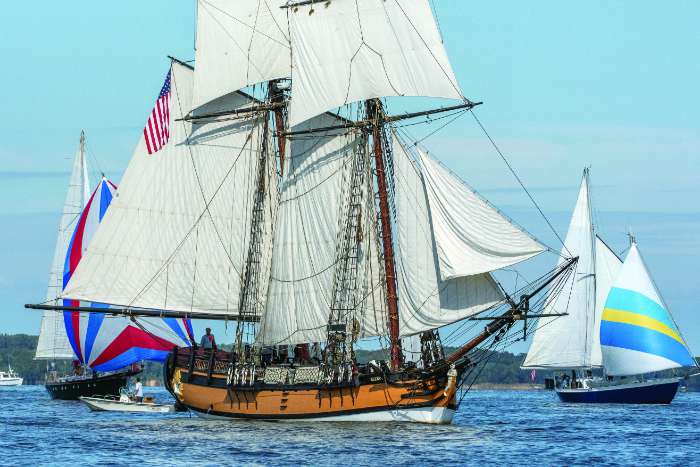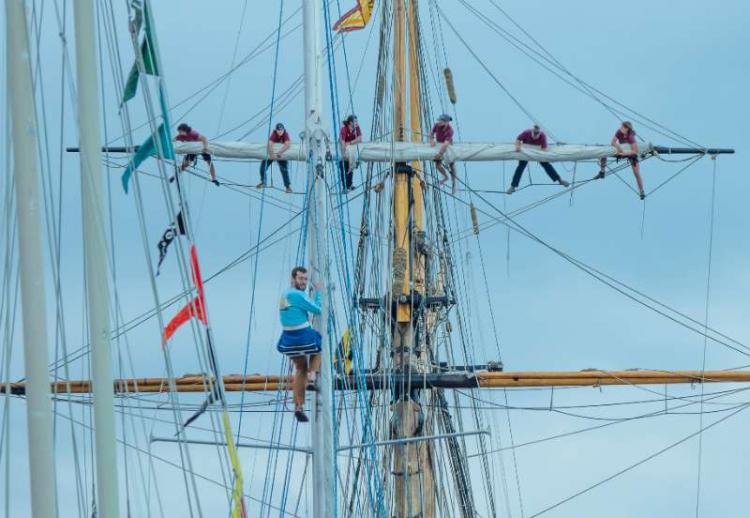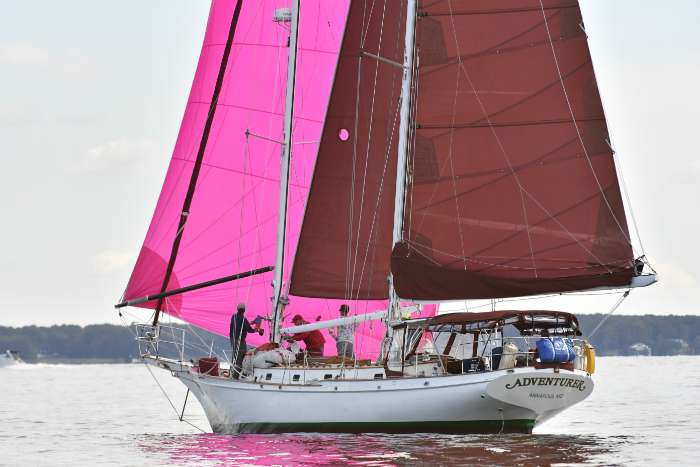Questions About the Great Chesapeake Bay Schooner Race, Which Starts October 6
It never ceases to impress. Every October, when a fleet of schooners jockeys for position to cross the start line of the Great Chesapeake Schooner Race (GCBSR), sailors of all stripes take notice. The impressive vessels, which typically range from 12 to 125 feet in length, are quite a sight as they gracefully move down the Bay.

Thursday, October 6, beginning at noon, more than 30 vessels will sail approximately 130 miles in five classes from a start line near the Bay Bridge south to the finish in Norfolk. Special events on land begin Tuesday, October 4 and conclude Monday October 10. In the days before and after the race, educational programming is conducted, and the public is invited to view the vessels and join a Sea Chantey Sing-along. Find details at gcbsr.org.
For the inside scoop, we asked veteran GCBSR skipper Duncan Hood six questions about the race. Here are his eloquent answers.
For someone who knows nothing about the race, what would be a couple of exciting things to learn?
Over the past 33 years, the Great Chesapeake Bay Schooner Race has become the premiere annual event featuring classic schooners from up and down the East Coast. Formed as a fundraising event for charities along the shores of the Chesapeake Bay after a challenge between the tugantine Norfolk Rebel and Pride of Baltimore, the race has raised and donated well over $400,000 for various charities in Maryland and Virginia to promote the history and ecology of the Bay.
Racing overnight from Annapolis to Norfolk, a total of 127 miles, schooners and crews are treated to the best and worst of the Chesapeake’s weather. The strategy is simple: get there first. The devil is in the details here and strategies need to account for tides, waves, winds, fish traps, shipping, storms, and calms. It’s a challenge. It’s also exhausting, nerve wracking and frustrating, resulting in a challenge with deep personal rewards for those who choose to participate.

Which schooner has competed in the most races?
The winner there would be Steve Briggs and his tugantine, Norfolk Rebel. Steve’s dad, Lane, started the race, and Steve has done every event since then, a total of 33 as of this October.
Why is it important for schooners and their captains and crew to come together annually?
Schooners are a link to our seafaring heritage, both past and present, and relate to our shipping industry even today. It was schooners that played a great part in the founding of our country during the Revolutionary War and that were the important vessels of commerce through the age of sail, bringing foreign goods to our shores and seafood to our tables.
By sailing in the race, captains and crews are reminded of those days while having a chance to test their skills on these classic boats. It’s a challenge to push these boats down the Bay, and the rewards, measured in terms of accomplishment, are significant, not to mention the bragging rights associated with the feat.
Finally, there is nothing quite so sublime and beautiful as a classic schooner under a cloud of sail making her way over the horizon to distant ports unknown. Despite the years, the romance stays with us all.

How much money has been raised in the virtual race?
Over the past three years, the virtual race, started in 2020 as an answer to the challenges of Covid, has raised more than $140,000 (in addition to the monies raised by the physical race) for various charities along the Chesapeake Bay from Maryland to Virginia. Each boat chooses a non-profit to race for/with, and together they fundraise over a four-day period, with all proceeds going to the charity. The boat/charity with the greatest amount raised wins!
Why did race organizers decide to let non-schooners compete as an invitational class?
In 2022, in order to increase the reach of our event and its impact on our non-profit charities on the Bay, an “N” class was created to include classic boats that reflect the character and spirit of the race but that are not necessarily schooners. These boats can include classic designed ketches, yawls, or sloops. Entry in the N class is juried based on a boat’s design and pedigree. The challenges are the same, but the scope of the race and its recognition have increased.
When was your first GCBSR and how many times have you participated aboard Adventurer?
My first race was with my uncle, Art Birney, in 1997, and I have participated in each race since then. I guess that would be 25 years/races now. Art has since passed on, but I keep his spirit alive by campaigning and showing his boat at festivals and races around the Mid-Atlantic region and in New England.
Parade of Sail Wednesday, October 5 in Baltimore--5 p.m.
Race start Thursday, October 6 off Annapolis--noon
Find the full schedule of events October 5-9 here.
Find photos by Al Schreitmueller from the 2021 event here.
Find more sailing stories here.




